https://ift.tt/1wI7CWZ
The world is feeling the effects of climate change. Storms are getting stronger, weather patterns are changing, food is becoming scarce, and animals are going extinct at an alarming rate. Fortunately, while there are many people that are continuing to hurt our environment, there are also people out there who are working feverishly to help it. From simple ideas to entire Eco-cities, new ideas are being developed everyday to help improve the environment and our lives.
10. Air Purifying Roof Tiles
A big problem with green technology is making it as practical as it is useful. With this in mind, a new trend in practical green technology is the coating of roof tiles with titanium dioxide, which is useful in cleaning the air. Titanium dioxide works as a photocatalyst by oxidizing nitrogen oxides and volatile organic compounds into soluble nitrates and fatty acids when exposed to UV light. Studies have shown that a thick coating of material on roof tiles reduces 97% of target greenhouse gases, while a thinner, cost effective coat still reduces the target gases by 88%. This means that it could cost just five dollars to coat an entire roof with the purifying compound. One home could remove 21g of nitrogen oxide a day, which is the equivalent of what a car releases driving 18,000 km. Widespread application would allow every home in the world to become a mini-air purifier. The idea is still in the testing phase, but early results have been extremely promising. The lighter color of the tiles also has the added benefit of producing a small cooling effect. There’s also a possibility of producing tiles to remove carbon dioxide, but this would decrease the practicality of the tiles by making the roofs harder to install.
9. Eco-Concrete
Eco-concrete is a green technology that combines strength, practicality and air-purification. It’s designed to eat smog and pollution by converting nitrogen oxide into harmless nitrogenous compounds. It has been shown to reduce these gasses by up to 45% in the right weather. The concrete has already been installed and tested in Holland with promising results. The biggest problem with Eco-concrete comes from its cost — compared to normal concrete, it costs quite a bit more because of its use of titanium dioxide. Researchers are currently working to find a solution to the problem and increase the concrete’s financial feasibility.
8. Fixing the Plastic Problem
At age 19 most people are worrying about work or college, but Boyan Slat had his eyes on something bigger when he came up with a method to drastically reduce the amount of plastic in our oceans. Though plastic has been a blessing to us in terms of convenience, it has also become a curse in the way it affects the environment and kills millions of marine animals every year. Slat recognized the severity of the problem and established an organization known as The Ocean Cleanup in response. He went on to develop a method that has been proven to be logistically, technically and financially feasible. It works using natural currents in the ocean and wind to help move the garbage towards collecting platforms, where it would be mechanically removed and recycled.
The price tag of this massive cleanup project is $43 million a year, but that’s 33% cheaper than other methods that promise to remove the same amount of plastic. The Ocean Cleanup is currently in the stages of raising money to implement their plan. It has been tested with computer models that show it should be able to clean up half of the garbage in the Great Pacific Garbage Patch. Furthermore, its proof of concept test was successfully done in the Azores. While this massive undertaking is a great step in the right direction, Slat believes more needs to be done to fix the problem completely.
7. Cool Pavement
Dark pavement used for most roads absorbs the sun’s energy and heats up the surrounding area. In the summer, pavement can reach up to 120-150°F, but Cool Pavement has been shown to reduce this by over 40°F. With pavement occupying 35-50% of the space in a city, this could have a huge effect on the overall temperature of the city itself. Researchers at Berkeley are currently trying to figure out what the best color would be for cool pavement to maximize its cooling effects. The two best options are to create reflective coating for existing pavements or create a new type of pavement made from lighter, more reflective material.
Other benefits include a decrease in pollution and smog, slowing global warming, saving energy by decreasing the need for air conditioning, and even decreasing the need for street lamps at night because of the reflective surface. While there is no way to know exactly how much coating an entire city would benefit the environment, Cool Pavement has been helping cities like Chicago that have paved their alleys with it.
6. Smog-Eating Buildings
Mexico City’s Manuel Gea Gonzalez Hospital constructed a 2,500 square meter facade that breaks down air pollutants when exposed to UV light. The honeycomb increases the surface area by 200% and allows the structure to neutralize the same amount of pollutants in one day that’s produced by 8,750 cars.
In addition, the city of Milan is using a smog-filtering concrete facade to purify the air. The architecture firm Nemesi and Partners have revealed their plans to produce an air-purifying structure in front of the Palazzo Italia. The 9,000 square meter structure will take about 2,000 tons of air-purifying concrete to complete. The concrete is made of 80% recycled materials and works by breaking down harmful pollutants into unreactive salt molecules when exposed to UV light. Nemesi and Partners are looking forward to presenting their designs at the 2015 Milan Expo, and plans are already in the works to make these designs a reality.
5. Real Flower Power
Much of today’s green technology is made to mimic what plants already do naturally to produce energy. Plants are able to create energy by breaking down carbon dioxide and water into sugar and starch with oxygen as a byproduct. Scientists have been able harness this energy by actually interrupting the photosynthetic process. This is done when the enzymes of the plant split the water molecules. At this point, oxygen, hydrogen, and electrons are produced and nanotubes are used to siphon the free electrons before they enter the electron transport chain to run the rest of the process.
The process takes place in the thylakoids, which are located within the chloroplasts of the plant cell. The thylakoids were modified to allow the nanotubes to detour the electrons down a wire and generate an electrical current. Usually, plants aren’t very efficient at producing energy from the sun and man-made cells generate up to 10 times the efficiency of a normal plant. But this new technology has proven especially surprising because the plant was able to generate twice the current of a similarly sized solar cell. While this technology is still in its infancy, researchers are hopeful that it will soon have practical uses and could be used to power household items or even entire power grids. Plus, increasing the use of plants could help purify the air in addition to providing power.
4. Energy Harvesting Concrete
Laurence Kemball-Cook put a new spin on energy harvesting when he founded Pavegen in 2009. Pavegen is a new type of energy-harvesting tile that converts the energy of a simple footstep into electricity that can be stored or used directly by devices. While the kinetic energy harvested from footsteps isn’t enough to supply energy to entire power grids, it could be very helpful in powering things like street lamps or vending machines. Pavegen is a working product in the process of becoming commercialized. In an attempt to showcase its usefulness, Pavegen was actually installed at the finish line of the Paris Marathon and was able to generate 4.7 kilowatt-hours of energy. Another benefit of installing Pavegen is that it allows the footsteps and movement of crowds to be tracked to optimize space and floor management.
While the tiles themselves are extremely practical, their installation could pose problems. The tiles have to be made and installed in ground that’s durable, weather resistant, and highly fatigue resistant. Furthermore, the tiles could be vandalized or stolen. There are still many kinks that need to be worked out to make Pavegen a fully commercialized product, but it’s definitely a step in the right direction.
3. Hyperloop
Elon Musk, the man behind electric car company Tesla, has a new idea up his sleeve. Known as the Hyperloop, this system would be able to transport passengers from Los Angeles to San Francisco in just 35 minutes, traveling at speeds of about 700 mph. The Hyperloop would use an electric compressor fan at the front of each individual passenger pod to surround it with a cushion of air and decrease friction, much like an air hockey table. The capsules would then be accelerated in a low-pressure tube with magnetization.
Furthermore, the Hyperloop would be completely self-sustaining by placing solar panels on the top of the tube and storing energy via compressed air. It wouldn’t disrupt the farmland along the route any more than a telephone pole. Musk estimates the project would cost about six billion dollars, which seems like a massive price tag until you realize that California voters already approved nine billion to be allotted for a speed train between San Diego and San Francisco. Musk feels that his Hyperloop will be more cost-effective and sustainable than any other proposed high-speed trains. It would greatly decrease pollution from cars and commercial airliners, as well as increase the efficiency and speed of travel.
2. Phoenix Towers
Currently, the world’s largest tower is the 830 meter tall Burj Khalifa. It may be in danger of losing its title to two proposed towers for the city of Wuhan, China. These towers would stand at 1000 meters and would serve to clean local air and water pollution. The towers would suck the water in from the surrounding lake, send it through a series of filters and then back out into the lake. In addition, the towers will be lined with a pollution absorbing coating and vertical gardens to pull even more pollution from the air. The chimney in the middle of the towers will serve to naturally pull air across the lake and oxygenate it. The towers will be completely self-sustaining thanks to wind turbines, solar panels, and hydrogen fuel cells that would run on the building’s waste. These elements will not only produce all the energy the towers need, but also generate a little extra energy for the surrounding area. The towers are currently awaiting the mayor’s approval, but it’s predicted that construction of this massive undertaking will be finished by 2017 or 2018.
1. Tianjin
Most green technologies are simply products to help existing cities become environmentally friendly. China is going a step further by simply constructing an entire eco-friendly city from scratch. Known as Tianjin, this sustainable community for 350,000 residents is expected to be complete by 2020 and will span over 30 square kilometers. The entire complex will be powered by solar and wind technologies as well as feature rainwater recycling, wastewater treatment, and desalination of seawater. Carbon emissions will be basically non-existent with 90% of traffic being public transportation.
The city will be divided into seven districts, each with its own sustainability theme. The Lifescape district will be in the heart of Tianjin and feature soil-topped mounds to contrast the surrounding high-rise buildings. Eco-Valley will serve as a corridor for the new light rail system to operate and connect the districts. Solarscape will act as the administrative and civic center. Urbanscape will function as core of the city and utilize vertical layering to reduce emissions and make efficient use of vertical space. Its buildings will be organized as a honeycomb and interconnect using sky bridges. Windscape will serve as a place for recreation and relaxation. Earthscape will function as the residential suburbs and be filled with lush greenery. Lastly, Eco-corridors will bisect the city and provide a path for animals to move about the city without human interference. If successful, Tianjin could serve as a stepping stone for more green cities.
TECH
TRENDS,AMAZING
via Toptenz.net http://www.toptenz.net
May 13, 2018 at 08:16PM
.png)

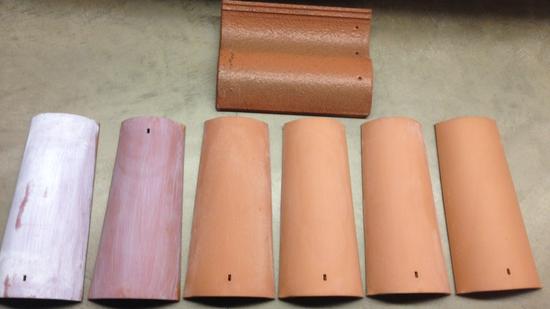
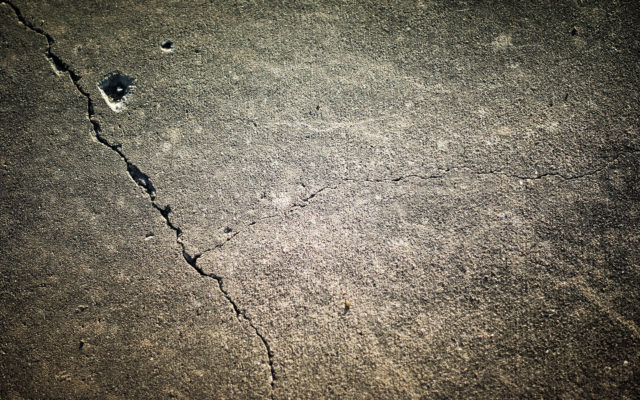
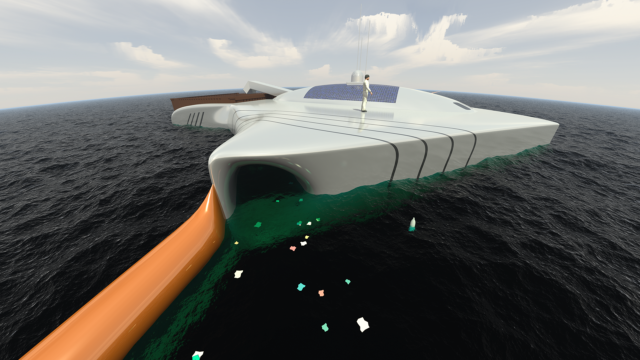

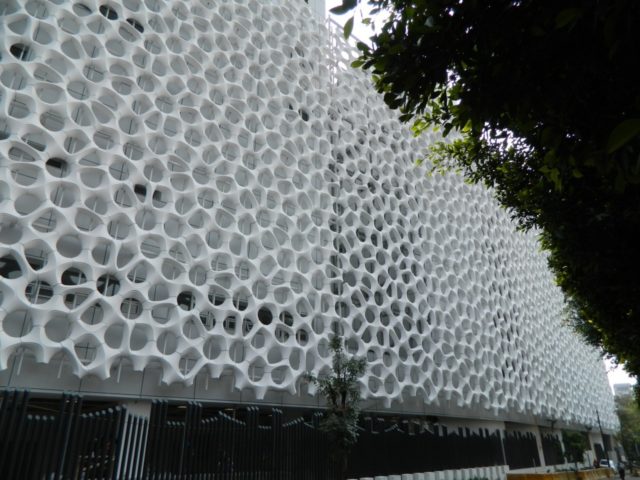

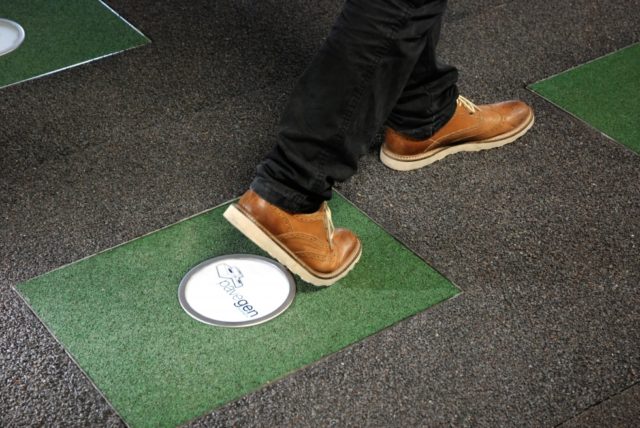
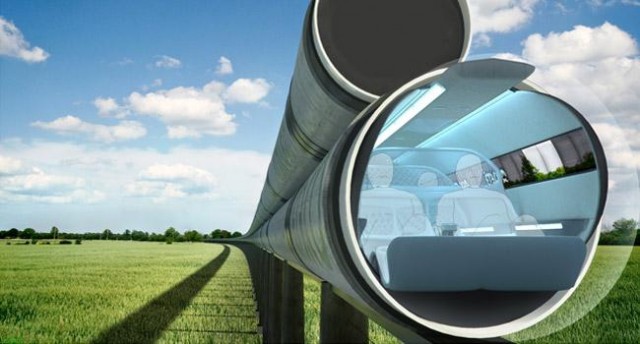
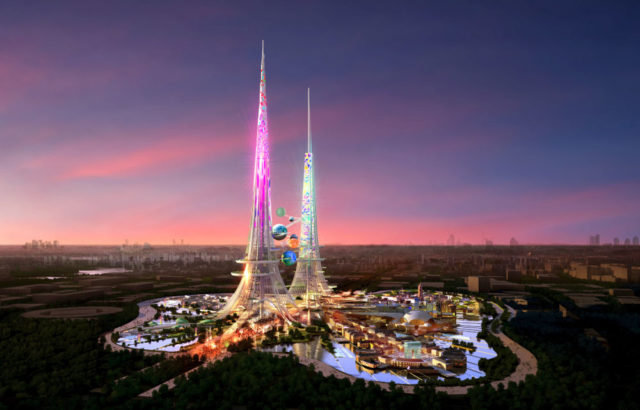
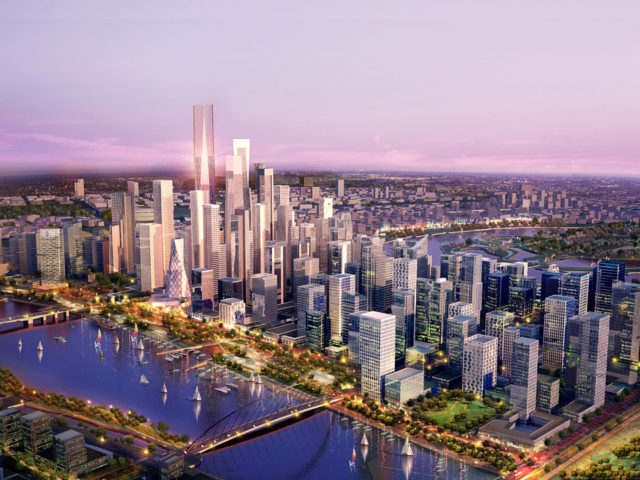
No comments:
Post a Comment